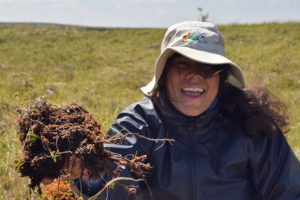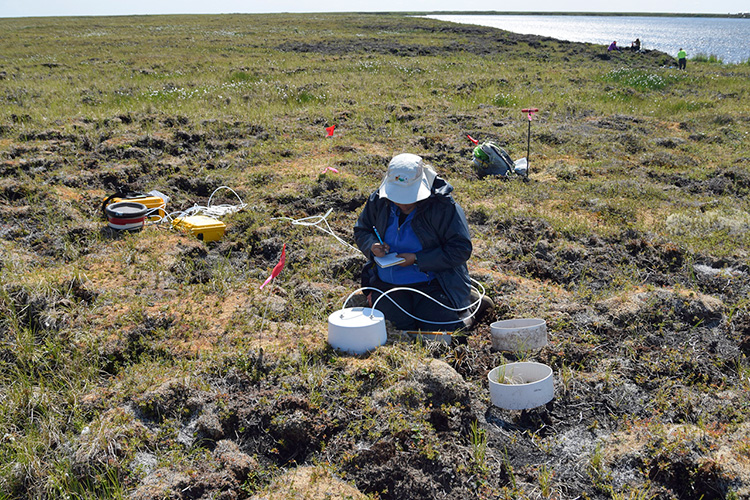The 2017 Polaris Project team spent two weeks studying climate change impact on the tundra of Alaska’s Yukon-Kusksokwim Delta. The team – including students and scientist faculty – returned to the Woods Hole Research Center on July 15 to process the samples they had taken in the field.
By Edauri Navarro Pérez
 Since I was a little kid I wanted to help the world and always knew that I can do it through my education. As an environmental science major, I have always been interested in how the world’s temperature, rainfall, and nutrient patterns change, and how these affect humans and vice versa. When I heard about the Polaris Project and going out to conduct research on the Yukon Kuskokwim Delta, I knew that was a unique way to fulfill this goal.
Since I was a little kid I wanted to help the world and always knew that I can do it through my education. As an environmental science major, I have always been interested in how the world’s temperature, rainfall, and nutrient patterns change, and how these affect humans and vice versa. When I heard about the Polaris Project and going out to conduct research on the Yukon Kuskokwim Delta, I knew that was a unique way to fulfill this goal.
When we arrive to our camp site, I remember that I was impressed on how well organized everything was. I remember the diversity of plants, the cold winds and how dark the soil was. The arctic is characterized by low temperatures, leading to a slow decomposition and higher carbon (C) retention in the soil, which results in a bigger and darker organic layer. Another characteristic of these soils is the presence of permafrost, a soil layer that is frozen for at least two consecutive years. Permafrost is a useful sink, retaining a lot of carbon and other nutrients. Due to the increases in temperature in the past few years and the change in climate patters, fire presence is increasing in these areas and permafrost is thawing, leading to a release of greenhouse gases like CO2, CH4 and N2O. When we were exploring the tundra, I observed in the burned and unburned areas how the presence of mosses and lichen coincided. I asked myself if these change soil temperature and moisture, altering the microbes and the production of GHG. Also, I knew that fire regimes sometimes make nutrients more available for the microbes. I hypothesized that this increase on nutrients can lead to “activation” in the microbes, producing more of the GHG.
With this in mind, I compared three unburned sites with three burned sites. In each of them I sampled three gas fluxes (CO2, CH4 and N2O), soil moisture and temperature. I also collected soil cores (10cmx10cm) to do some incubations, C:N potential and nitrogen (N) mineralization’s experiments in the lab at the Woods Hole Research Center. My preliminary results suggest that the emission of soils respiration (CO2) and the amount of NH4 and NO3 is increasing with the presence of fire. This leads us to think that the presence of fires has an input on N and this input is linked with the production of CO2. Also, there is evidence of CH4 gas production in the tundra. These results are very important because they showed that now the changing Arctic is processing and emitting greenhouse gases (GHG), which are likely to increase with the presence of fires. All these processes directly affect the permafrost, increasing its thawing and changing the entire ecosystem. Thawing permafrost and the resulting emissions will alter global temperature patterns, sea currents, nutrient cycling, food webs and life as we know it.
Besides the scientific discoveries and the interesting results that we got from this research, the Polaris Project was one of the highlights of my life. The work, friends and colleagues that I made through this experience are ones that I will never forget. I grew up so much during this expedition, I discovered myself in a lot of personal and professional ways. Also, I reinforced that, besides being our passion, research is more than just data and science. Research is focused on helping people and we are trying to have a better understanding on the future and how the Earth works so we can help people and our environment.
For all the good moments, adventures and learning, thank you so much Polaris!
Edauri Navarro Pérez is studying environmental science at the University of Puerto Rico, Río Piedras Campus. She expects to graduate in 2018.




